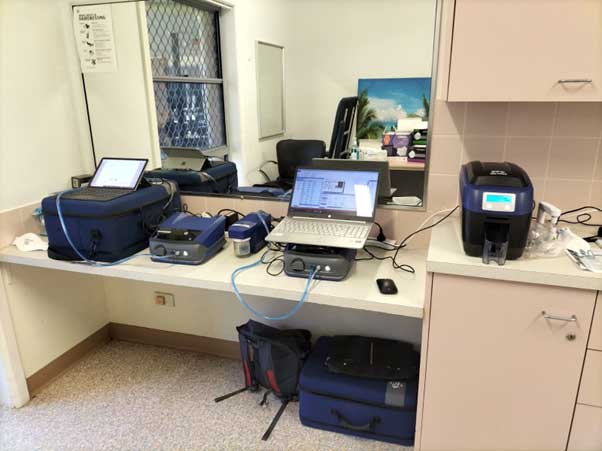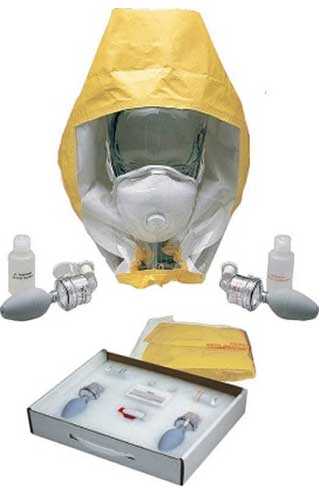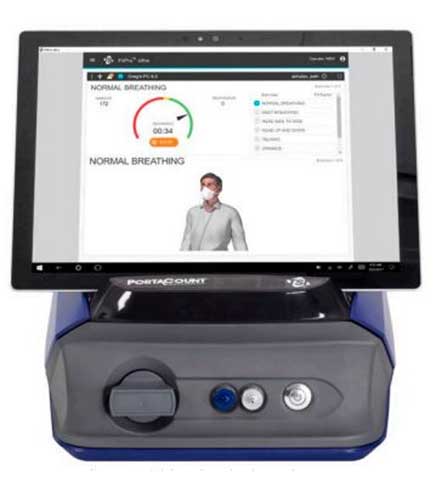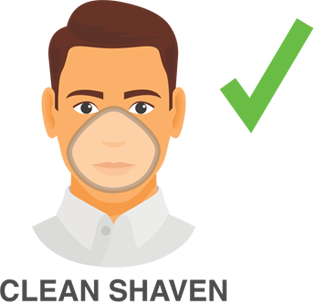Quantitative Respirator Fit Testing

Ensuring Respirator Safety with Independent EHS
Fit testing is a crucial process for ensuring the proper fit and effectiveness of tight-fitting respirators, which are essential for protecting workers from harmful contaminants. It is a requirement under the Work Health and Safety Regulation in Australia to ensure the personal protective equipment (PPE), including respirators, is suitable, well-fitting, and comfortable for the wearer. Fit testing involves checking that a specific model and size of respirator matches the wearer's facial features and seals adequately to the face. This helps to identify unsuitable respirators and ensures a reliable level of protection. There are qualitative and quantitative fit testing methods available, each with its own advantages. Fit testing should be conducted by competent individuals and should be repeated annually or whenever there are changes in the wearer's facial features or the respirator model. Fit checking, although important, cannot replace the need for fit testing. By following fit testing protocols and guidelines, organizations can ensure the safety and well-being of their workers.


Reasons for Fit Testing
Fit testing is a crucial procedure in respiratory protection that ensures a proper seal and adequate protection for workers using tight-fitting respirators. One of the main reasons for fit testing is to minimize the risks associated with a respirator not fitting properly. An ill-fitting respirator can result in contaminant leakage into the facepiece, compromising the worker's health. Factors such as smoking, eating, facial hair, dental work, and the use of glasses can affect the success of fit testing and must be taken into consideration to achieve a secure fit. By conducting fit testing, employers can mitigate these risks and ensure workers have the necessary protection against airborne hazards.

Choosing the Right Size Respirator
Choosing the right size respirator is crucial for achieving a proper seal and ensuring adequate protection. Factors to consider when selecting a respirator size include facial characteristics, such as face shape and size, as well as measurements such as nose bridge height and face length. It is important to follow the appropriate test protocols and use the correct test solutions to accurately assess the fit of the respirator. By choosing the right size respirator, workers can ensure a secure and comfortable fit, minimizing the risk of contaminant leakage and maximizing their level of protection.

Pre-test Checklist and Requirements for Fit Testing
Before conducting a fit test for respirators, it is important to ensure that all necessary requirements are met. Here is a pre-test checklist to guide personnel:
- You need to have a clean-shaven face where the respirator touches your skin. Facial hair can interfere with the seal and reduce the protection.
- Ensure you have viewed and identified approved facial hair styles for the style of respirator being tested eg. Disposable type you must be clean shaven with a razor no exceptions.
- You need to refrain from eating, drinking (except water), smoking, chewing gum or tobacco for at least a min 15 minutes before the test. These activities can affect the overall results.
- You need to bring your own respirator if you have one, or use one provided by the fit tester. The respirator should be the same make, model, and size that you will use on the job.
- To ensure appropriate hygiene protocols are followed any respirators supplied on the day are considered yours to keep and appropriate costs will be passed on to the employer for payment.
- You need to follow the instructions of the fit tester and perform the required exercises during the test. The exercises are designed to simulate the movements you would make while wearing the respirator on the job.
- You need to inform the fit tester prior to if you have any medical conditions that may affect your ability to wear a respirator or participate in the test. Some medical conditions may prevent you from wearing a respirator safely or comfortably.
- Conditions of entry to fit testing are based on your current health if it is believed that you are not fit for duty and present in an ill heath for testing you may be refused access and considered a failed result.
By following these pre-test requirements, fit testers can ensure accurate and reliable fit test results, allowing for the selection of the appropriate respirator for each individual's needs.
Remember, the fit test itself is a critical step in the respiratory protection program, verifying the effectiveness of the seal between the respirator and the wearer's face to provide adequate protection against airborne hazards.
Fit Test Methods and Protocols
Fit testing is a process of ensuring that a tight-fitting respirator provides adequate protection to the wearer by creating a good seal with the face. Fit testing is required by many countries for workers who need to use respirators on the job. There are two types of fit testing methods: qualitative and quantitative.
Tight-fitting respirators must seal to the wearer's face in order to provide expected protection. This includes disposable respirators (also called "filtering facepieces"). Fit testing is required by Australian New Zealand Standard AS/NZS1715 before a user wears a respirator on the job, and should be assessed at least annually. In addition, fit tests should be performed:
- Whenever a different size, style, model or make of respirator is used.
- When any facial changes occur that could affect fit, such as significant weight fluctuation or dental work.
AS/NZS1715 doesn't require fit test administrators to be certified, just to know how to conduct a test, recognize invalid tests, and properly clean and maintain equipment.
There are two kinds of tests: qualitative and quantitative.

Qualitative fit testing is a pass/fail test that relies on the wearer's ability to taste or smell a test agent.
This type of test is only suitable to test half-face disposable and reusable respirators but is not suitable for full-face respirators.
Although this type of test is based on subjective detection and response by the wearer of the RPE, it is important that it is administered by a fit tester competent in using this method.
Note: Where the test subject is unable to detect either of the saccharin or Bittrex test agents, quantitative fit testing must be used.

Quantitative fit testing (QNFT) provides a numerical measure of how well a facepiece seals against a wearer's face and this is called a fit factor. These tests give an objective measure of face fit. QNFT methods are suitable for disposable and reusable half masks and full-face masks. Examples of QNFT methods are:
- ambient particle counting
- controlled negative pressure (CNP).
Note: Where it is not possible to achieve a suitable fit using tight-fitting respirators, RPE that does not rely on a tight-fitting face seal should be used, such as a loose-fitting respirator hood or helmet.
Record Keeping and Results
At Independent EHS we recognise that meeting the minimum standards may be acceptable to some however we believe setting the standards is also achievable. The expectation and industry standard upon successful completion of a fit test will be documented evidence "Certificate" is provided to wearer or employer as required and a card of any description be it plastic or cardboard is provided to the wearer within a reasonable time frame.
At independent ehs our minimum standard is all wearers with successful pass results are issued a Plastic Wallet ID Card the same day with their photo placed onto the ID Card this in turn reinforces the training and a workers Duties and Obligations to ensure they are clean shaven. Certificates are also updated to show the wearer on the day of testing which identifies the wearers facial hair style and acknowledgement of the training provided at time of test.
A detailed company register is provided to all customers to enable them the ability to monitor and control who has been tested within their organisation and to identify when Annual testing is due.
Online Booking with Independent EHS
At Independent EHS, we prioritize your convenience and safety. Recognizing the importance of timely fit testing for respiratory protection, we have streamlined the process by introducing an online booking system. This allows organizations and individuals to seamlessly schedule fit testing appointments at their preferred time. With just a few clicks, you can secure a slot for your team or yourself, ensuring compliance and safety without the hassle of traditional booking methods. Our digital platform is user-friendly, secure, and efficient, reflecting our commitment to provide top-notch service to our clients. Don't leave the protection of your workers to chance; book your fit testing appointment with Independent EHS online today.

Which facial hair styles may be suitable with my half face or disposable respirator?
To ensure any tight fitting respirator is performing to its optimum ability the wearer must ensure and maintain the seal and be clean shaven as per approved facial hair styles below. ASNZS 1715 2009
If workers have any facial hair that interferes with any sealing surface area of a respirator, or long facial hair that also interferes with any valves or function of the mask, then a loose fitting head-top on a PAPR blower may need to be considered as a suitable alternative to the wearer removing interfering facial hair.

Resources
Newsletter Sign Up
Stay up to date on industry updates, products and services.
